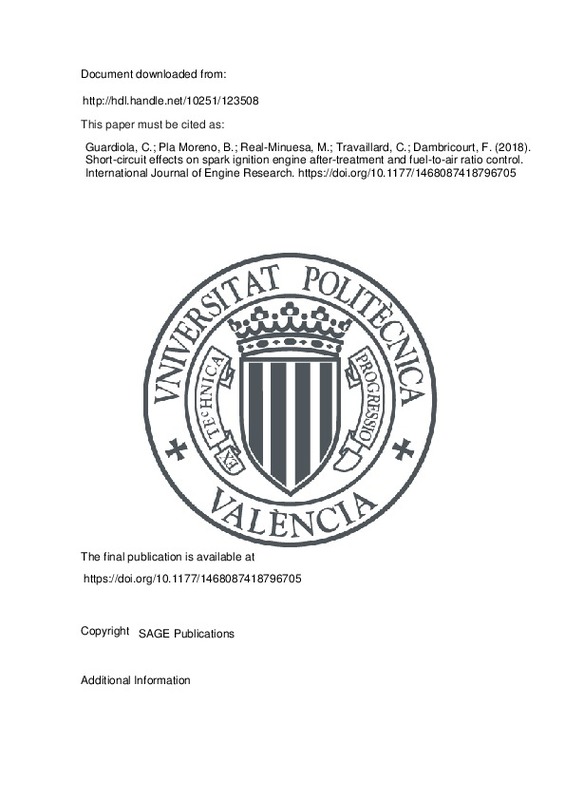JavaScript is disabled for your browser. Some features of this site may not work without it.
Buscar en RiuNet
Listar
Mi cuenta
Estadísticas
Ayuda RiuNet
Admin. UPV
Short-circuit effects on spark ignition engine after-treatment and fuel-to-air ratio control
Mostrar el registro sencillo del ítem
Ficheros en el ítem
| dc.contributor.author | Guardiola, Carlos
|
es_ES |
| dc.contributor.author | Pla Moreno, Benjamín
|
es_ES |
| dc.contributor.author | Real-Minuesa, Marcelo
|
es_ES |
| dc.contributor.author | Travaillard, Cyril
|
es_ES |
| dc.contributor.author | Dambricourt, Frederic
|
es_ES |
| dc.date.accessioned | 2019-07-11T20:02:15Z | |
| dc.date.available | 2019-07-11T20:02:15Z | |
| dc.date.issued | 2020 | es_ES |
| dc.identifier.issn | 1468-0874 | es_ES |
| dc.identifier.uri | http://hdl.handle.net/10251/123508 | |
| dc.description.abstract | [EN] The short circuit of fresh air is a more and more extended strategy to deal with low-end torque issues, very common in small turbocharged and spark-ignited four-stroke engines. Therefore, from the author¿s point of view, it is interesting to check whether the after-treatment system can work properly under these conditions. In the present study, the effect of the fresh air short-circuit on engine emissions has been assessed through its impact on the wideband l sensor and the three-way catalyst behaviour, which are the key elements of the fuel-to-air ratio control strategy. In particular, the analysis of the sensor dynamic response shows that the l sensor overestimates the fuel-to-air ratio under short-circuit conditions. The sensor overestimation leads the actual fuel-to-air ratio out of the proper three-way catalyst window; in this sense, results show a non-negligible emissions increase, especially in terms of NOx. Regarding the impact on the threeway catalyst behaviour, the study shows how short-circuit pulses change the exhaust gas composition for a given fuel-toair ratio at catalyst inlet, which also contributes to a penalty in the three-way catalyst efficiency | es_ES |
| dc.description.sponsorship | The author(s) disclosed receipt of the following financial support for the research, authorship, and/or publication of this article: The authors acknowledge the support of Spanish Ministerio de Economı´a, Industria y Competitividad through project TRA2016-78717-R. | |
| dc.language | Inglés | es_ES |
| dc.publisher | SAGE Publications | es_ES |
| dc.relation.ispartof | International Journal of Engine Research | es_ES |
| dc.rights | Reserva de todos los derechos | es_ES |
| dc.subject | Short-circuit | es_ES |
| dc.subject | SI engine | es_ES |
| dc.subject | Fuel-to-air ratio control | es_ES |
| dc.subject | Three-way catalyst | es_ES |
| dc.subject | Emissions control | es_ES |
| dc.subject.classification | MAQUINAS Y MOTORES TERMICOS | es_ES |
| dc.title | Short-circuit effects on spark ignition engine after-treatment and fuel-to-air ratio control | es_ES |
| dc.type | Artículo | es_ES |
| dc.identifier.doi | 10.1177/1468087418796705 | es_ES |
| dc.relation.projectID | info:eu-repo/grantAgreement/MINECO//TRA2016-78717-R/ES/ESTRATEGIAS DE CONTROL BASADAS EN LA INFORMACION CONTEXTUAL DEL VEHICULO PARA LA REDUCCION DEL CONSUMO DE COMBUSTIBLE Y LAS EMISIONES EN CONDICIONES REALES DE CONDUCCION/ | es_ES |
| dc.rights.accessRights | Abierto | es_ES |
| dc.contributor.affiliation | Universitat Politècnica de València. Departamento de Máquinas y Motores Térmicos - Departament de Màquines i Motors Tèrmics | es_ES |
| dc.description.bibliographicCitation | Guardiola, C.; Pla Moreno, B.; Real-Minuesa, M.; Travaillard, C.; Dambricourt, F. (2020). Short-circuit effects on spark ignition engine after-treatment and fuel-to-air ratio control. International Journal of Engine Research. https://doi.org/10.1177/1468087418796705 | es_ES |
| dc.description.accrualMethod | S | es_ES |
| dc.relation.publisherversion | https://doi.org/10.1177/1468087418796705 | es_ES |
| dc.type.version | info:eu-repo/semantics/publishedVersion | es_ES |
| dc.relation.pasarela | S\388502 | es_ES |
| dc.contributor.funder | Ministerio de Economía y Competitividad | es_ES |







![[Cerrado]](/themes/UPV/images/candado.png)

